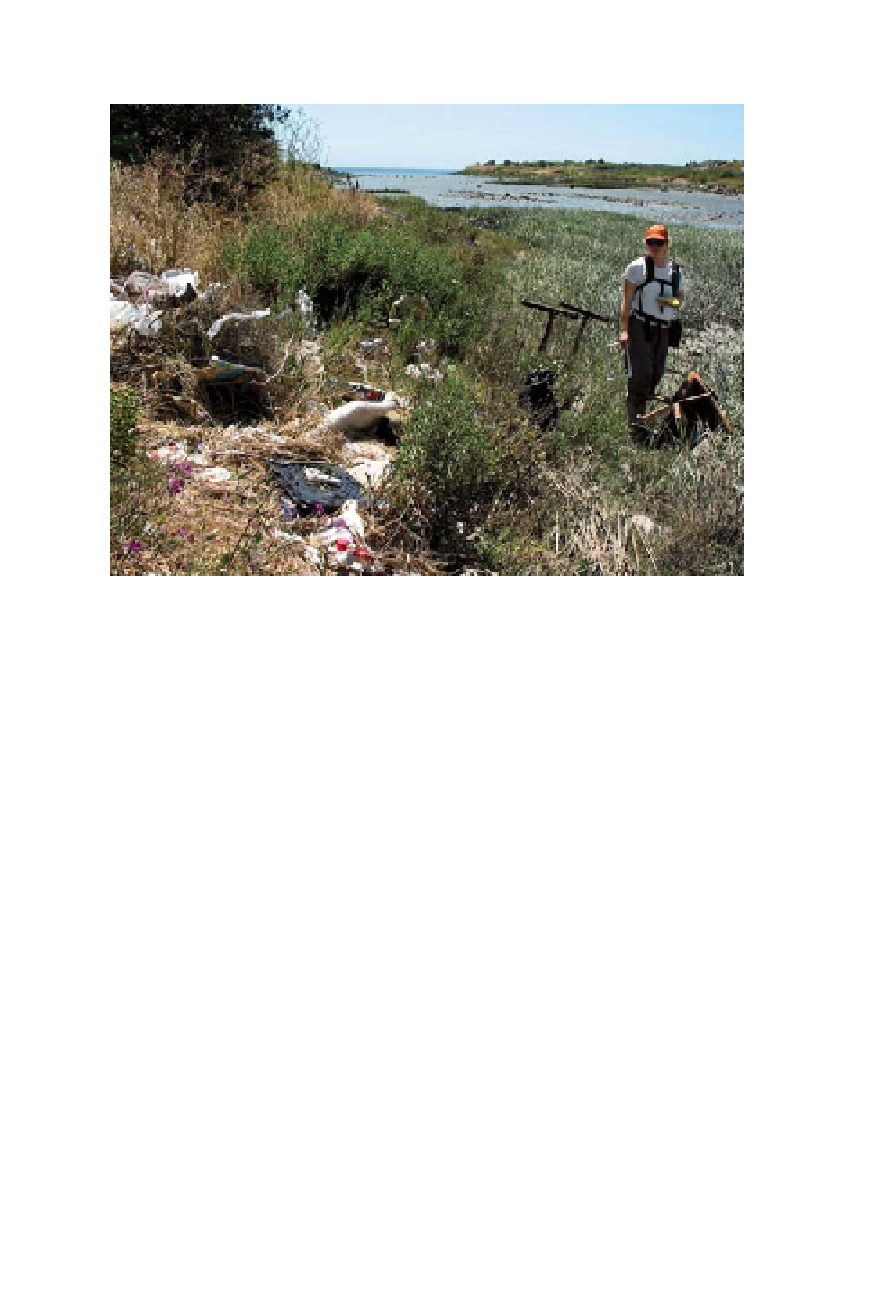Biology Reference
In-Depth Information
Marshes and shorelines such as this one on Yosemite Slough near San Francisco's
Hunter's Point have long been dumping grounds for all manner of refuse. (Jude
Stalker)
travel in the layer of fresh water at the surface of the bay right out of the
Golden Gate.
So much plastic has entered the oceans over the last 30 years that the
Pacific now includes a feature called the Great Pacific Garbage Patch. Lo-
cated northwest of the Golden Gate and halfway between Oregon and Ha-
waii, this region of refuse sprawls over an area twice the size of Texas. Oth-
ers have described these waters as a plastic soup that extends as deep as
100 feet. In some parts of the patch, plastic outweighs even plankton by a
ratio of six to one. Its tons of garbage are fed by ocean currents from as far
away as Japan and California. Ocean currents act like relay runners in a
race until, over the course of several years, trash from the Bay Area ends
up in the patch.
Bay Area governments are taking steps to keep the estuary and the
oceans clean. Cities around the region sweep their streets to remove trash
from roadsides and gutters. Oakland charges businesses that produce dis-
posable products a fee that goes toward litter pickup, and it bans the use
of Styrofoam and plastic utensils in favor of compostable food service-
ware made of potato and other starches. And San Francisco limits the use
of ubiquitous grocery store plastic bags. Over time, these efforts should
help stem the tide of trash that threatens the health of the bay and the
oceans alike.

